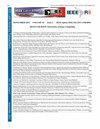A new solution based on multi-objective algorithm for multi-application mappings for Many-Core systems
IF 1.3
4区 工程技术
Q3 COMPUTER SCIENCE, INFORMATION SYSTEMS
引用次数: 0
Abstract
In the current context of intelligent systems and big data, specifically concerning high-performance and efficient data processing for streams applications, single-core systems can no longer meet this demand. Increasing their operating frequencies would result in higher energy consumption for the chip as a whole. Thus, in this scenario, multicore and manycore chips appear to be a viable solution. However, distributing mono8 application or multi-application tasks on these devices is not trivial in practice. It is necessary to consider heat dissipation effects throughout the system while simultaneously ensuring fault tolerance and good load balancing. Although there is not yet a considerable number of works in the literature addressing the allocation of multi-applications in NoCs, there are many works focusing on mapping mono-applications. Therefore, this article proposes a multi-objective mapping model that focuses on performance metrics and heat distribution for multi-applications in manycores with NoCs, aiming to contribute in this direction. The results found are compared with the state-of-the-art algorithm in this scenario, showing promise for the field, with improvements of more than 30% in latency and 38% in fault tolerance when all applications are taken into account.基于多目标算法的多应用映射新解决方案
在当前智能系统和大数据的大背景下,特别是对于流应用的高性能、高效的数据处理,单核系统已经不能满足这种需求。增加它们的工作频率将导致更高的能量消耗为芯片作为一个整体。因此,在这种情况下,多核和多核芯片似乎是一个可行的解决方案。然而,在这些设备上分配单8应用程序或多应用程序任务在实践中并不是微不足道的。在保证容错性和良好的负载均衡的同时,需要考虑整个系统的散热效果。虽然在文献中还没有相当多的作品涉及noc中多应用程序的分配,但有许多作品关注于映射单应用程序。因此,本文提出了一个多目标映射模型,该模型侧重于具有noc的多核多应用的性能指标和热量分布,旨在为这一方向做出贡献。将发现的结果与该场景中最先进的算法进行比较,显示出该领域的前景,当考虑到所有应用程序时,延迟提高了30%以上,容错性提高了38%。
本文章由计算机程序翻译,如有差异,请以英文原文为准。
求助全文
约1分钟内获得全文
求助全文
来源期刊

IEEE Latin America Transactions
COMPUTER SCIENCE, INFORMATION SYSTEMS-ENGINEERING, ELECTRICAL & ELECTRONIC
CiteScore
3.50
自引率
7.70%
发文量
192
审稿时长
3-8 weeks
期刊介绍:
IEEE Latin America Transactions (IEEE LATAM) is an interdisciplinary journal focused on the dissemination of original and quality research papers / review articles in Spanish and Portuguese of emerging topics in three main areas: Computing, Electric Energy and Electronics. Some of the sub-areas of the journal are, but not limited to: Automatic control, communications, instrumentation, artificial intelligence, power and industrial electronics, fault diagnosis and detection, transportation electrification, internet of things, electrical machines, circuits and systems, biomedicine and biomedical / haptic applications, secure communications, robotics, sensors and actuators, computer networks, smart grids, among others.
 求助内容:
求助内容: 应助结果提醒方式:
应助结果提醒方式:


